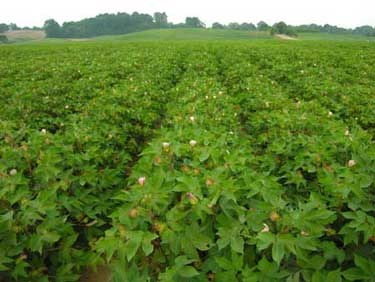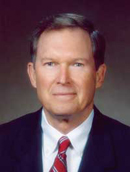The final budget reconciliation package was painful but equitable. Cotton clearly contributed its part to deficit reduction through the elimination of Step 2. Further harm was averted after the NCC led a coalition of organizations representing commodities, financial institutions and equipment manufacturers in calling on Senators to reject a divisive payment limits amendment and the Administration’s initial budget proposal for much deeper cuts. If history is any indicator, this misguided amendment can be expected to surface again at virtually any time. The NCC will continue to build coalitions and urge Congress to reject any such amendments that establish artificial limits discriminating against regions, crops or organizational structure.
Early preparation for the next farm bill began and included industry members’ participation in many of USDA’s 40-plus “listening sessions” held across the country. NCC members consistently voiced strong support for maintaining many of the current law’s provisions. Looming ahead are the Congressional farm bill hearings, which will be held frequently throughout 2006. The NCC will continue working to maintain farm law integrity in light of budget baseline and trade agreement pressures.
After the Dominican Republic-Central America Free Trade Agreement was satisfactorily modified, the NCC rallied in support of the pact. We recognized that it was the best opportunity for supplying Western Hemisphere industries with U.S. cotton fiber and cotton textile products and could help U.S. textile mills compete with surging Asian imports in the global, quota-free environment.
In partnership with the U.S. government, the U.S. cotton industry continued sharing its knowledge and experiences with West African producers to help these less developed countries improve their cotton production, processing and marketing. Unfortunately, the impacts of such efforts may be offset if global cotton consumption falters in the face of stiff competition from manmade fibers. There may be an escalation in West Africa and Brazil’s insistence on the U.S. reducing farm supports.
The U.S. cotton industry also will continue to expand its global leadership role to cultivate customers. We must have the cooperation and assistance of the world’s other cotton producing countries on increasing worldwide demand for cotton. We challenged these countries to find 26 million bales of lost demand by the end of 2010 and reminded them that aggressive advertising and promotion is needed to convince consumers of cotton’s benefits over synthetic fibers.
Exports of U.S. cotton fiber, upland plus Pima, are expected to reach 16 million bales for the 2005-06 marketing year. We need this level of exports, and more, to keep our U.S. cotton infrastructure in place and profitable. That will entail our garnering a healthy share of sales to China, which is expected to increase its total raw cotton imports by 10 million bales in 2005-06.
The NCC’s export promotions arm, Cotton Council International, is playing a key role on these fronts. Additional Market Access Program funding for fiscal 2005 enabled CCI to build on its successful COTTON USA promotion program. Already operating in 50 markets worldwide, CCI, in partnership with Cotton Incorporated, is elevating its promotion of U.S. cotton’s unique attributes and technical services for the industry to remain competitive.
The NCC also is working to ensure the industry does not lose sight of the need to produce the fiber types that can: 1) meet our customers’ needs and 2) meet synthetic competition head on in rapidly developing markets like China, India and Pakistan.
 |
| USDA projected a record U.S. upland cotton crop for 2005 of 23.7 million bales. |
The escalation of NCC’s seed cotton/lint contamination prevention campaign was another effort aimed at pleasing U.S. cotton’s customers – and one that had a positive impact on 2005 crop harvest and processing.
The NCC was diligent in looking after a wide range of other technical activities and programs. With more than nine million acres still under active boll weevil eradication, pressing for necessary federal funding to complete that effort was a primary objective. Likewise, funding was sought for pink bollworm eradication to keep that program moving forward.
The Cotton Foundation, which celebrated its 50th year in 2005, continues to offer significant support to cotton research and education endeavors through several outstanding special projects and the general projects that are funded by member firms’ dues. Dues of $376,000 in 2005-06 are supporting 30 general projects – all aimed at improving U.S. cotton’s competitive position in the world marketplace. NCC staff estimates that taking into account cash and in-kind services, the Foundation’s general projects enjoy a return of about $3 for every dollar devoted to these projects.
After adding the cottonseed industry segment to its official family in 2004, the NCC was successful in bringing new member firms into the organization this past year. Overall, NCC members embraced the organization’s two-tiered membership plan – a move that is strengthening NCC’s ability to carry out its mission.
 |  |
Woods Eastland, Chairman | Mark D. Lange, President/CEO |

Mark D. Lange
President/CEO


